- Getting around Lijiang. Dont stay in the Old Towns more than 2 days, there is nothing to do. KRISS Oct 9, 2013 05:46
- 2013 Beijing Temple Fair BENNYLAU Feb 26, 2013 03:29
- Malaysian traveling from KUL - LAX vis Shanghai PVG ZATI_DY Jan 3, 2013 20:15
<A> Impressions of Ningxia II: 1 Temple, 1 Desert & 108 Towers
- Views: 4315
- |Vote: 0 0
- |Add to Favorites
- |Recommend to Friends
Meeting the Yellow River
A lot of time in China is taken up with journeying between places, it’s all part of the adventure. We only have 2 goals today: to see 108 Towers and to reach Zhongwei. We would accomplish this using 5 means of transportation (6 if you include feet!)
No buses go directly to the small town of Qingtongxia that lies closest to the towers and so we first catch a mini-bus to the town of Xiaoba. It takes 1 hour. We make our way to another bus station where we catch a very small mini-bus to Qingtongxia. The bus drops us off in the middle of a housing estate it seems, but fortunately a friendly local who lives in the direction of the towers says we can follow him. He also says the towers are rubbish and not worth visiting.
It is about 2km further on in the hot sun complete with backpacks that we stumble across a massive hydroelectric dam and the 黄河 [Yellow River].
The Yellow River is mighty and tends towards the brown if you feel like being pedantic, but this is my first glimpse of this mighty mass of water and I’m not disappointed. Its weary width stretches far into the distance. But where are the 108 Towers ?
Finding 108 Towers
The 108 Towers are actually on the other side of the river and the only way to get to them is by boat. Even better!! We happily board a zippy jet boat and 5-minutes-up-the-Yellow-River later and we are wobbling out onto a small jetty on the other side. In the murky distance, along a brick path not unlike the Yellow Brick Road, the towers are just visible pressing their triangular arrangement into the edge of the Qingtong Gorge.
The 108 Towers are mentioned in historical documents from the Western Xia Dynasty indicating they were constructed around the 11th Century. I very much doubt the brick and railings that now constitute the structure are anything near as old as that. It’s a shame. Still, the essence of the 108 Towers is interesting enough.
They are arranged to form an isosceles triangle, from the single tower at the top, in the following numerical pattern: 1,3,3,5,5,7,9,11,13,15,17,19. The towers were in fact originally Buddhist ‘Dagobas’ (sacred dome-shaped structures containing relics), touching all 108 is believed to relieve you of all your troubles…
I only touch a few… I think Cali and I are both travelling light on worries in Ningxia.
The structure is surprisingly steep and reminds me of nothing if not walking around on a giant chessboard, I have Alice in Wonderland and Harry Potter moments… but all the pieces are pawns! Actually though, the bases of every row of towers are different in shape. At the top of the triangle, when you reach the one-tower, there’s a small temple. Here, you can buy metre-high sticks of incense for 200rmb a time or pay a monk to tell your fortune.
As usual I am more interested in the aesthetic of the landscape that the cloudy heat is now rendering barren and colourless. The Yellow River’s murky bulk fades into the distance edged by sharply-reeded water meadows and the curious croaking of frogs (or could be toads). An abundance of pale brown gorge stands behind the towers and distant hills loom lazily in the haze.
Getting to Zhongwei
Back in Qingtongxia we take a taxi to the nearby (very slightly larger) town of Wuzhong from where we can get another bus to Zhongwei, our destination for the night. The female taxi driver takes us to the bus station, winds down her window and asks a nearby driver about the bus to Zhongwei. It turns out it has just left, 2 minutes ago. We don’t have time to ponder our next move because without a word the driver puts her foot down and speeds us off, Cali and I hang on. A few minutes later she is madly hooting her horn and trying desperately to run a large bus off the road, OUR bus. The bus pulls over, we scramble aboard with our packs and the biggest of thanks to our fearless taxi driver.
The drive to Zhongwei is hot, fast and dodgy, we both doze. I wake up at extreme moments to take in the subtly-stunning scenery that’s central Ningxia: flat, barren expanses of sandy soils and hundreds of thousands of fastigiate birches in slender green teams. Every so often a richly decorated mosque leaps into the scene, and just as quickly disappears… this bus is flying…
Cali wakes me for my first glimpse of the desert, its pale, dry skin hiding behind the hills. Every time the bus stops to let some lucky passenger escape I can hear a strange dove-like cooing. I have heatstroke perhaps ? It turns out the man opposite is carrying pigeons in his sacks…
Heaven and Hell: Gao Miao Temple
There’s nothing much in Zhongwei. It’s just a stop-over on the way to the desert but it does have a temple. To be honest, I’ve visited a lot of temples and find myself pretty much templed-out in China. So I’m not too excited about 高庙 [Gao Miao].
Though, I’m always delighted when China pulls yet another rabbit out of the hat and so when Cali and I step into the complex at 8am, I am happily surprised… it is heavenly.
The courtyard is richly planted, cool and symmetrical. Immediately welcoming. The temple complex itself occupies a very small space but is said to rise into the air like a Phoenix. I won’t disagree with that. The temple also splits its allegiances between Buddhism, Taoism and Confucianism and though I’m not sure how that works spiritually, I decide its eclecticism is its strength.
300 rooms are contained within this structure that I can describe as nothing if not a vertical maze. Steps and walkways link beautifully painted walls, intricately carved eaves and countless tiny temple rooms each with its own unique Buddha.
What’s really crazy is that this temple also has its own ‘Hell’. I guess that’s pretty unique ? It’s definitely a gimmick but it’s a well-executed one, residing in an underground series of tunnels that are dark and spooky. There are trip switches that activate horrible noises and scenes of torture from being stabbed to being boiled in oil. Cali and I did in fact hold hands at this point and tiptoed our way through the cool, damp labyrinth. I was relieved to make it back into the bright sunlight!
So we can say that we’ve been to Hell, and not everyone can say that, though somehow I’d expected it to be a little warmer...
Meeting the Desert
We arrive at the blockage of tourist buses and taxis that is the research station at the edge of the real, live Tengger Desert. The station itself is not to be sniffed at, having won countless awards from the ‘International Community’ for its work into desert management. To the South is a giant playground where the desert meets the Yellow River and the Chinese have exploited its tourist potential to the full. It’s true, the desert is much busier than I thought it would be! Cali and I are happy enough to be tourists.
***************************************************************************************************
The South
An enormous dune hundreds of metres high drops down to the Yellow River and it is with glee that we abandon our shoes and socks and sink toes into the pleasantly warm sand. It isn’t so much walking down as drifting in long steps as the sand steals our feet from under us.
The dune makes its sharp descent to an oasis like strip of greenery and tourist gismos before coming to a halt at the Yellow River. Numerous boats crowd the wide expanse; from jet skis to cruisers. There are a couple of narrow, pedestrian suspension bridges stretching their white concrete across the lazy waters. A never-ending string of camels zigzag the dune at one side or, for a slightly smoother ride, cable-cars fly from top to bottom to top at the other.
We want to raft on the river and make our way to the authentic sheepskin rafts that are famous here. Each raft floats upon 14 plastic barrels, each covered with a sheepskin. It costs 2000rmb to make one. The raft itself is cool enough, holding 4 adults plus the ‘driver’ and maintaining easy stability. We drift lazily down the Yellow River under the yellow sun…
I’m glad I brought my hat. The temperatures skyrocket and in the mid-day heat we are trying to make our way back UP the large dune. This is something we’ll both never forget.
Happily removing my socks and shoes once more I take about 2 steps onto the sand before I fall over… my feet are BURNING; the morning warmth has been replaced by a baking heat that scorches my soles and makes it impossible to walk in bare feet.
The sand is asserting itself!
Even here, at the very edge of the desert, I’m learning about respect. Deserts are not to be taken lightly. It takes us absolutely ages to ascend the dune, every step forwards is 6 backwards and the heat is flattening. My shoes are filled to the brim with sand that forms a neat mould around the edge of my feet and wedges them in.
It’s with some relief that we reach the top and sink into a cheap restaurant to drink water and decant the desert from our clothes. It’s at this point I notice how sunburnt my arms are! This is the reason that I end up wearing a jumper in the scorching desert.
The Wonder of Camels
The North
We head across the road to the North part of the station and this is where the desert really begins.
A vast beach with neither water or breeze: shadeless. A slippery bright brown that continues to the equally bright blue sky and the bright yellow sun: an over-exposed reality. It’s 100% true that there’s nothing but sand in the desert, billions of grains of the stuff. Every direction is identical. It’s as hostile as it is compelling and I can’t resist the chance to venture further.
There’s only one reason humans can make it in the desert: camels.
Striding aboard is easy enough, I just wish they’d tell me when the creature was gonna get up!! It jerks upwards, back legs first, sending me into a near 90-degree headfirst position before righting itself… I feel seasick.
Camels are fabulous. Surly, disdainful and tough, you can only love them. I’m obsessed with their feet. The toes separate to allow wads of leathery skin through that expand into great flat pads with every step distributing the weight. They don’t sink or burn like Cali and I had earlier! Camels have a unique ability to make each step appear vertiginous, they are contortionists and the ride is jerky and strange. I think I’m grinning the whole time!
We all ask to dismount in the desert to play for a while in the emptiness of sand. Tiny black beetles shuffle across the dunes leaving pretty patterns. We add our own footprints; they might be the first. The desert is ever changing, ever the same. It’s both beautiful and terrible. Just how terrible we would discover later, when we hear that 20 students ventured too far that day and got lost, 1 of them died.
Evening in Zhongwei
We make it back to Zhongwei in the early evening, sunburnt and sandy. I’m still relieved I took my hat, but Cali and I have been toasted. I have the best shower of the week and luxuriate in the water for some time, absorbing moisture. We will both be discovering sand for days to come in our clothes, pockets, bags.
Have the most wondrous pumpkin & potato soup for dinner at a restaurant near the Bell Tower. Dusk falls and the lights of Zhongwei blink into the darkness. There are fairy lights scattered in fir trees lining the road. Is it Christmas ?
Later we will drift to the tiny town centre where a circle of fountains dances to Chinese folk songs about love. We talk and watch the local children running their rings around the fountains until, in the warm darkness of a Ningxia night, the music and water end. We head home, stopping for a final beer before bedtime.
I’m thinking about my first meeting with the desert from the safety of a cool beer. I’m thinking about camels’ feet. So strange, so beautiful -
***************************************************************************************************
An acknowledgement to WB Yeats whose words I borrowed in this review. From the poem: He Wishes For The Cloths Of Heaven.



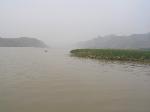
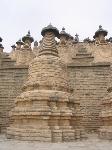
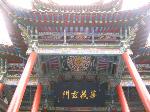

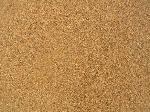
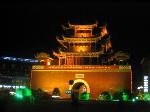
 Copyright © 1998-2025 All rights reserved.
Copyright © 1998-2025 All rights reserved.